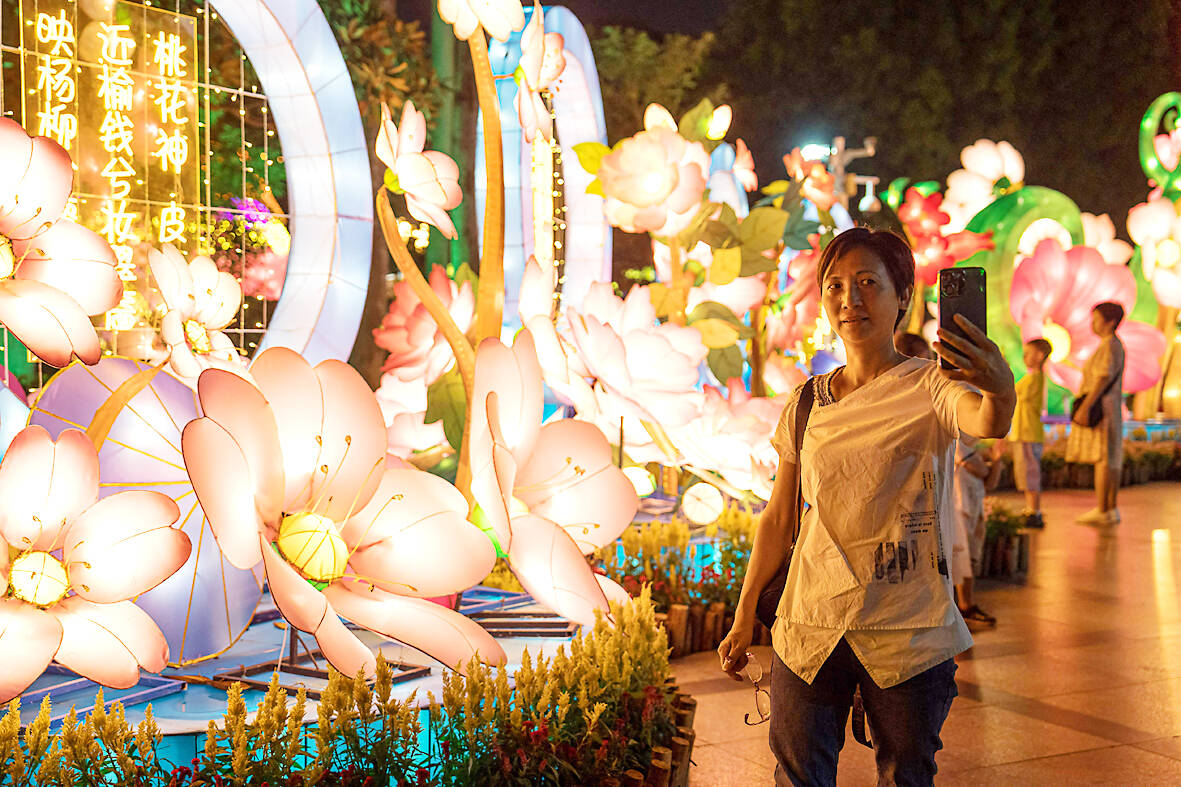In a karaoke room filled with balloons, confetti and cake, a 34-year-old woman dances with a dozen friends celebrating her “rebirth of the past.” The woman, who posts on Chinese social media under the name Sushi, had just ended her four-year marriage.
Shaking off social stereotypes around divorce that suggest she should feel shame and failure, she decided to throw a party with all of her girlfriends. She put on a favourite black dress from the time before she met her husband, to honor that she was “getting back to the life before marriage.”
The celebration looked something like a bachelorette party. A big red banner hung on the wall declaring “life is a big stage, so be brave and fly!” Her girlfriends showered her with confetti and gave her bouquets of flowers, as if celebrating a victory.

Photo: AP
“If I had known divorce would be so happy, I would have done it a long time ago!” Sushi wrote on social media.
On Xiaohongshu, a Chinese video-sharing social media app, divorce parties and inspiring content about the lives of newly single women are gaining thousands of likes.
Comments like “Happy rebirth!” and “congratulations!” flooded Sushi’s divorce party video.
Another 35-year-old Chinese fashion blogger, who posts under the name Wushuang, organized a divorce ceremony last June. She invited her parents and some friends to witness this new beginning in her life.
“Failure in marriage or relationship does not mean failure in my life,” Wushuang said on her social media account.
The divorce rate in China has risen from 0.96 percent in 2000 to 3.10 percent in 2020. At the same time the marriage rate has plummeted from 6.7 percent in 2000 to 5.8 percent in 2020. According to the most recently available Supreme People’s Court data, in 2016 and 2017, more than 73 percent of plaintiffs in divorce cases were women. Among more than 1.4 million divorce cases registered, emotional discord was listed as the primary reason for 77.5 percent. Domestic violence accounted for 14.9 percent.
The shift in views on divorce has been significant. Historically, the low social status of women in China led to the dominance of men in divorce proceedings. Getting divorced would often damage a woman’s reputation, but not her ex-husband’s.
That started to change in 1980, when divorce registration was made easier, with “breakdown in mutual affection” allowed as an official reason.
Yaya Chen, a researcher at the Shanghai Academy of Social Science and a gender equality activist, said the public celebrations were a demonstration of the changing attitudes in China.
“Society as a whole has become more accepting of divorce, which is partly related to the increase in the number of single, non-married women and the awakening of women’s awareness of gender equality,” she said.
But as China stares down the barrel of a demographic crisis and ageing population, the government is trying to encourage more marriages and families, and to slow the divorce rate.
In 2021 the Chinese government implemented a “cooling-off period” for divorce, requiring couples to give love another chance and extending the separation process time in the hope they would change their minds.
China’s ministry of civil affairs said that the main purpose was to “add a threshold for those who divorce hastily or impulsively.”
But the cooling-off period caused widespread criticism on Chinese social media. One woman said she felt “re-chained for a month by those who consider themselves righteous.” Another woman said the rule “creates a disturbance in society.”
The raw number of divorces has dropped in the last three years, but demographers point to a correlation in declining numbers of marriages — last year recorded the fewest number in 37 years — and note that divorce rates tend to fall during times of economic instability, as China is experiencing now.
“Some have chosen to postpone marriage in order to advance their careers, studies, and professions and to enjoy their personal freedom,” said Pan Wang, senior lecturer in Chinese and Asian studies at the University of New South Wales.
“Divorces are seen as redemption from broken relationships, a solution to marital problems, and the beginning of a new life.”
On the day Sushi went to the civil affairs bureau, she hired a photographer to document the finalization of her divorce. She blurred her ex-husband’s figure and shared it on her social media. “It’s important to keep a record of this happy day.”

Not long into Mistress Dispeller, a quietly jaw-dropping new documentary from director Elizabeth Lo, the film’s eponymous character lays out her thesis for ridding marriages of troublesome extra lovers. “When someone becomes a mistress,” she says, “it’s because they feel they don’t deserve complete love. She’s the one who needs our help the most.” Wang Zhenxi, a mistress dispeller based in north-central China’s Henan province, is one of a growing number of self-styled professionals who earn a living by intervening in people’s marriages — to “dispel” them of intruders. “I was looking for a love story set in China,” says Lo,

It was on his honeymoon in Kuala Lumpur, looking out of his hotel window at the silvery points of the world’s tallest twin skyscrapers, that Frank decided it was time to become taller. He had recently confessed to his new wife how much his height had bothered him since he was a teenager. As a man dedicated to self-improvement, Frank wanted to take action. He picked up the phone, called a clinic in Turkey that specializes in leg lengthening surgery — and made a booking. “I had a lot of second thoughts — at the end of the day, someone’s going

In the next few months tough decisions will need to be made by the Taiwan People’s Party (TPP) and their pan-blue allies in the Chinese Nationalist Party (KMT). It will reveal just how real their alliance is with actual power at stake. Party founder Ko Wen-je (柯文哲) faced these tough questions, which we explored in part one of this series, “Ko Wen-je, the KMT’s prickly ally,” (Aug. 16, page 12). Ko was open to cooperation, but on his terms. He openly fretted about being “swallowed up” by the KMT, and was keenly aware of the experience of the People’s First Party

Standing on top of a small mountain, Kim Seung-ho gazes out over an expanse of paddy fields glowing in their autumn gold, the ripening grains swaying gently in the wind. In the distance, North Korea stretches beyond the horizon. “It’s so peaceful,” says the director of the DMZ Ecology Research Institute. “Over there, it used to be an artillery range, but since they stopped firing, the nature has become so beautiful.” The land before him is the demilitarized zone, or DMZ, a strip of land that runs across the Korean peninsula, dividing North and South Korea roughly along the 38th parallel north. This